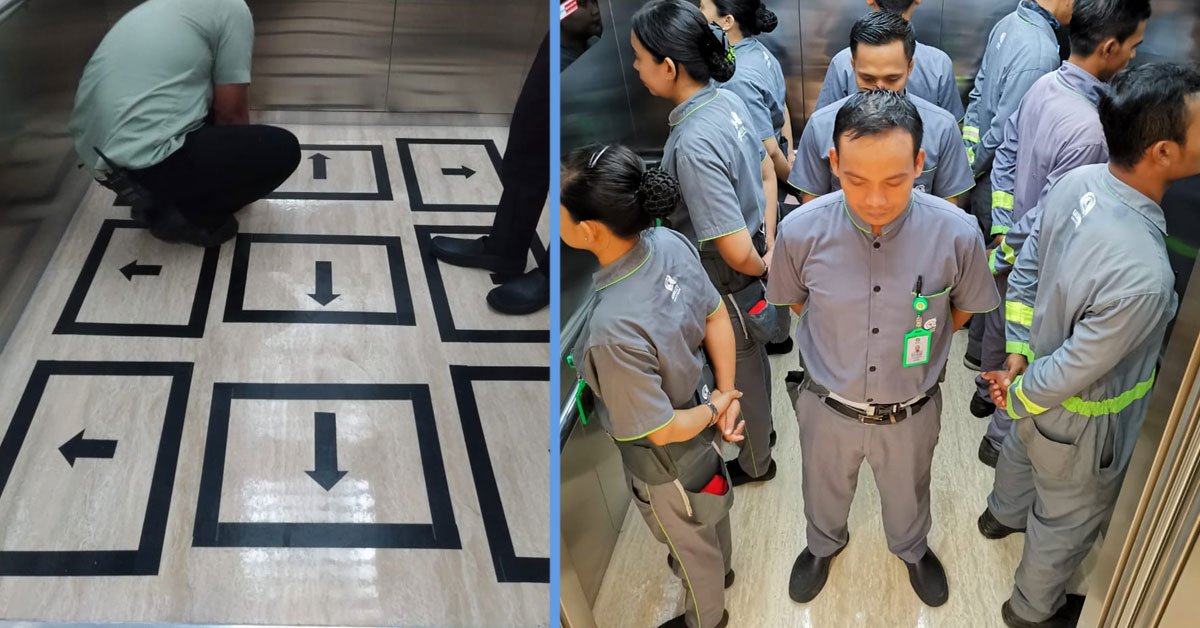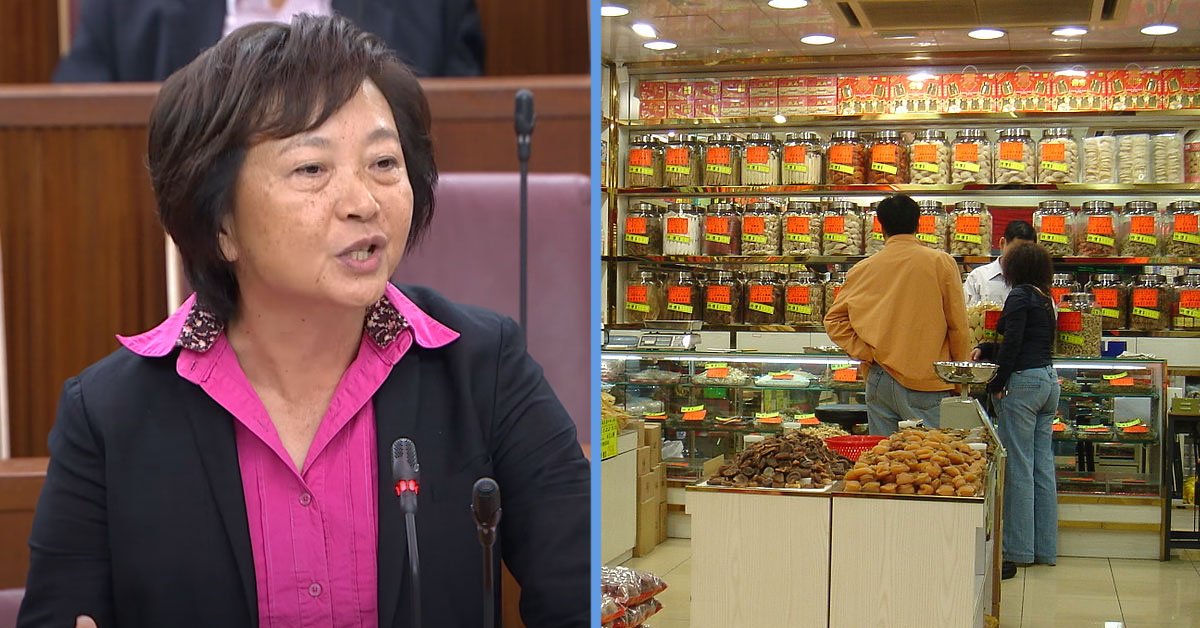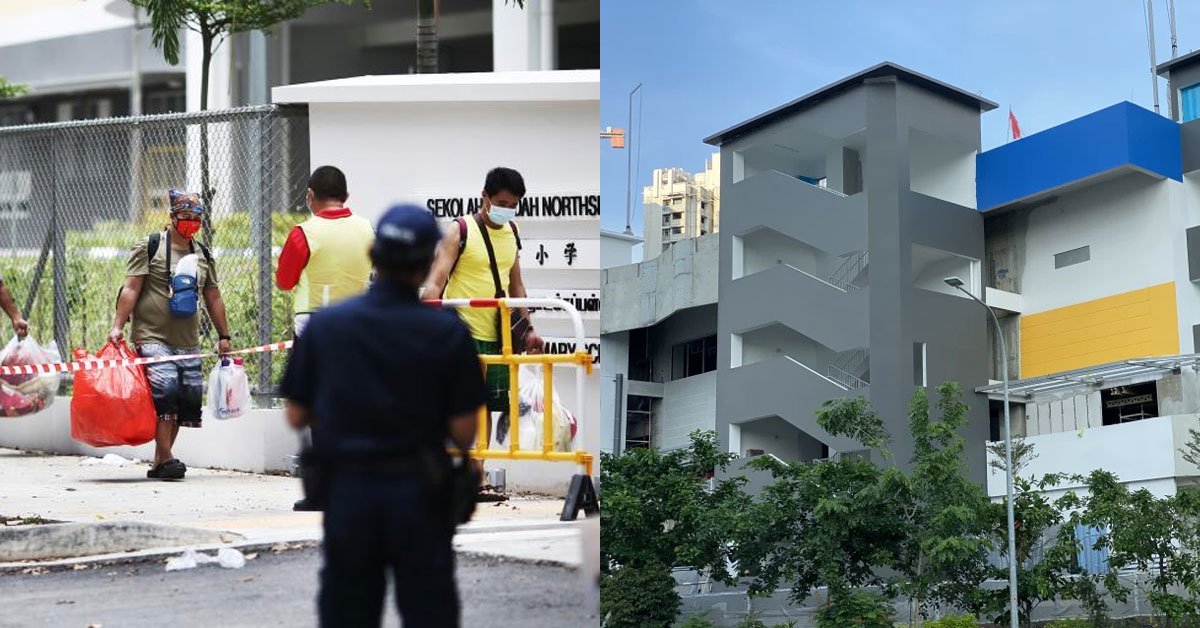A year ago, if you tell me that people will be afraid of short contact with strangers and also told how to stand in lifts, like a dystopian society, I would have laughed at you.
Now, I’m the one being laughed at because of this particular image that tells you exactly how to stand:

The reason is, as we know, the topic of literally every article we put out the previous weeks: COVID-19.
The notice has the following pictures (full colour from Twitter user @hrdbacot) and a notice:
Lifts in Maybank Tower have been marked out for the purpose of social distancing, in view of the current COVID-19 situation.
You are encourage (sic) to follow the floor markings when using in groups or sharing with other building occupants.


And in case you’re wondering, there’s also a “Standard Operating Procedure” (SOP) to leaving the lift, shown by another Twitter user @bukanasam (in a different lift):
Sudah berlaku di kantor aku pic.twitter.com/4tUmZAzuML
— Arrasyid (@bukanasam) March 17, 2020
We’re not the only country to do this. A hospital in Thailand is also doing the same thing:

Social Distancing Isn’t Limited To Lifts
You might remember the social distancing seats in hawker centres.

And the unusually wide distance between ministers in their press conference.
Pop quiz! Is what we just showed you social distancing?

Actually, kind of, but not really. The answer is actually quite complicated, so refer to our article for the long answer. Or if you want to waste an afternoon reading Wikipedia, here.
Essentially, the lift thing is just one very small part of social distancing, which also includes measures like school and workplace closures, cancelling of mass gatherings, and a lot of other measures to make sure people stay the hell away from other people.
But How Effective Is Social Distancing, Actually?
Washington Post did a very interesting and informative visual simulation of social distancing efforts here, using a hypothetical disease with 100% transmission but no lethality.
Here’s the end graph that shows recovered (pink), infected (brown) and healthy (light blue) people against time (left to right):

As you can see, social distancing reduces the number of infected, while no social distancing at all basically leaves everybody infected, with the majority then recovering from the disease.
You’ll also see that the right graphs are flatter, which is what people mean when they say “flatten the curve”.
If you’re somehow not convinced that we should practice social distancing yet, here’s another reason.
According to a Facebook post and photos from Epicalyptic, a group of 14 elephants broke into a village in Yunan to look for corn and food while humans are carrying out social distancing.
They then proceeded to get drunk on 30kg of corn wine and fell asleep on a nearby tea garden.
No, really:




